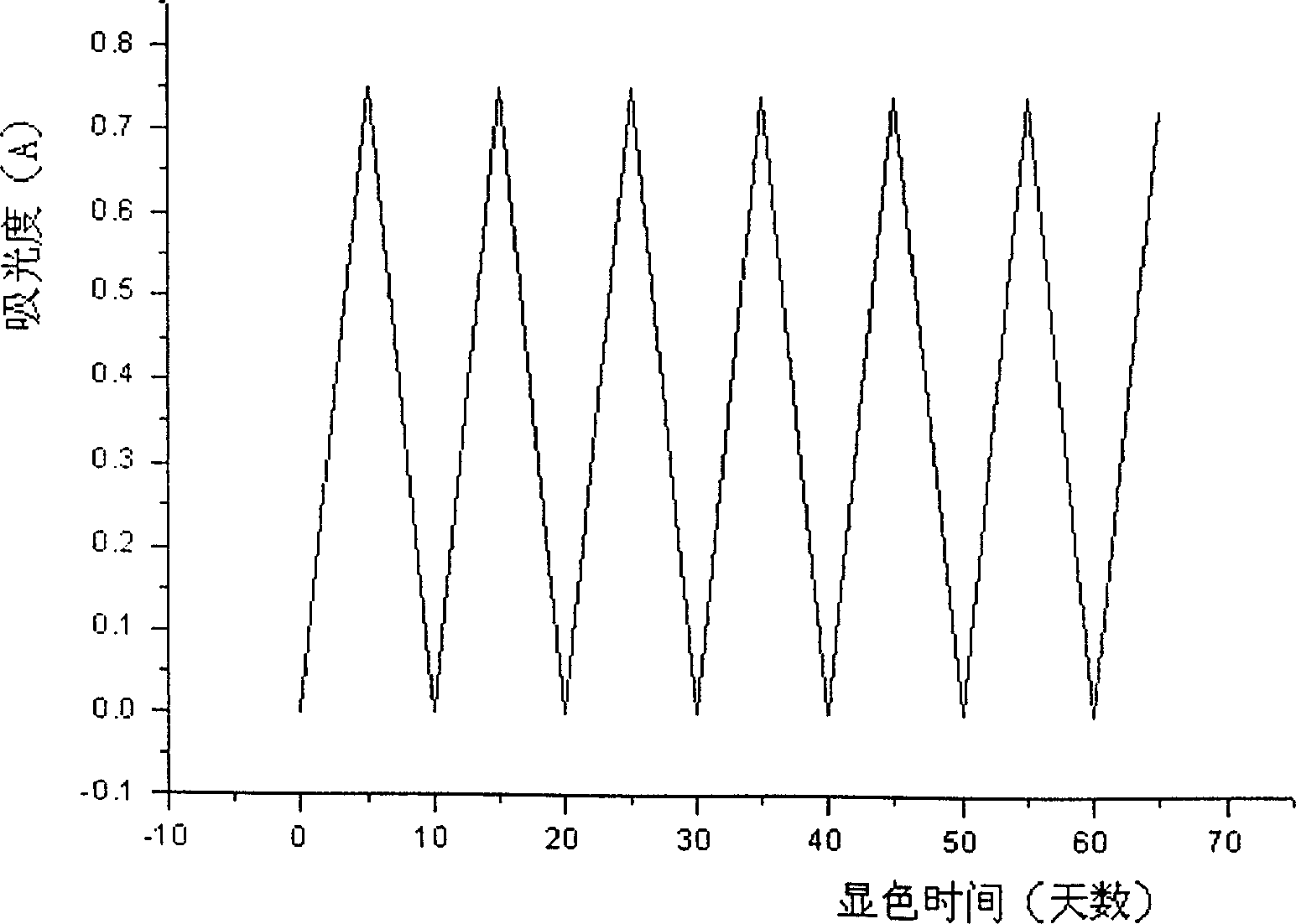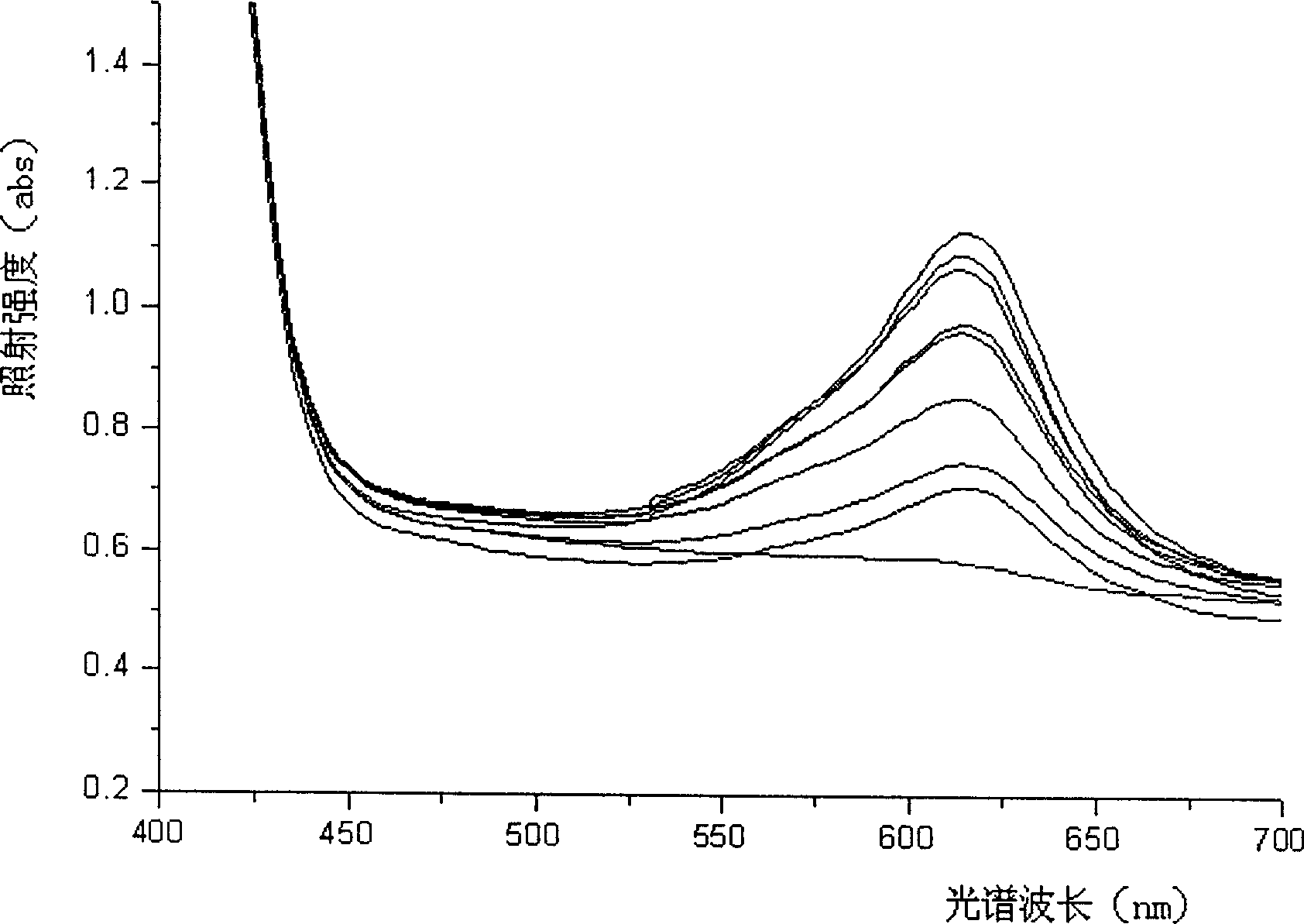Preparation of polyvinyl butyral from photochromic nano composite material and its method
A technology of polyvinyl butyral and nano-composite materials, applied in photosensitive materials, optics, instruments, etc., can solve the problems of increasing processing costs, affecting defoaming, bonding strength, etc., and achieves easy defoaming, bright color, The effect of long service life
- Summary
- Abstract
- Description
- Claims
- Application Information
AI Technical Summary
Problems solved by technology
Method used
Image
Examples
Embodiment 1
[0040] Embodiment 1: Preparation of photochromic nanocomposite material
[0041] The first step, the synthesis of 6-chloro-2,3,3-trimethylindoline iodide
[0042] In a 1000mL three-neck flask, add 26g of p-chloroaniline and 150mL of 6M HCl, heat to dissolve, then cool it to about 0°C with an ice bath, control the temperature and add dropwise 15g of NaNO 2 60mL of aqueous solution, continue to stir for 30 minutes, filter, add Na to the filtrate 2 SO 3 solution (70g Na 2 SO 3 +400mL water), after the addition, stir again until the temperature rises to room temperature, add concentrated HCl to acidify. The solid was obtained by suction filtration, and after drying thoroughly, weighed 35 g of the solid and put it into a 500 mL round bottom flask, then added 300 mL of absolute ethanol and 34.4 g of methyl isopropyl ketone, and added concentrated H 2 SO 4 20mL, heated to reflux for 7 hours, distilled off the solvent ethanol, and then washed with saturated Na 2 CO 3 Neutraliz...
Embodiment 2
[0049] Embodiment 2: Preparation of photochromic PVB film for blue automobile and building
[0050] The first step is the mixing of plasticizers and additives
[0051] Weigh plasticizer DHA (or 3GH, 3GO) 800~860g, add potassium acetate 1~1.8g, ultraviolet absorber UV-770 (or T-P) 5~10g, antioxidant CA (or POP) 10~20g, Heat and stir to make it all dissolve, let it cool down, and set aside.
[0052] The second step is the mixing of photochromic nanocomposites and PVB resin
[0053] Weigh 2000-2800g of PVB fine powder, add 8-14g of blue photochromic nano-composite material, stir well and mix evenly.
[0054] The third step, the preparation of photochromic PVB film
[0055] Spray the mixed solution of plasticizer and auxiliary agent into the PVB resin powder mixed with photochromic material, stir well and gradually heat up to 90°C, and extrude under suitable process conditions through an extruder to produce Meet the requirements of photochromic PVB film.
Embodiment 3
[0056] Embodiment 3: Preparation of photochromic PVB film for purple automobile and building
[0057] The first step is the mixing of plasticizers and additives
[0058] Weigh plasticizer DHA (or 3GH, 3GO) 800~860g, add potassium acetate 1~1.8g, ultraviolet absorber UV-770 (or T-P) 5~10g, antioxidant CA (or POP) 10~20g, Heat and stir to make it all dissolve, let it cool down, and set aside.
[0059] The second step is the mixing of photochromic nanocomposites and PVB resin
[0060] Weigh 2000-2800g of PVB fine powder, add 8-14g of purple photochromic nano-composite material, fully stir and mix evenly.
[0061] The third step, the preparation of photochromic PVB film
[0062] Spray the mixed solution of plasticizer and auxiliary agent into the PVB resin powder mixed with photochromic material, stir well and gradually heat up to 90°C, and extrude under suitable process conditions through an extruder to produce Meet the requirements of photochromic PVB film.
PUM
| Property | Measurement | Unit |
|---|---|---|
| tensile strength | aaaaa | aaaaa |
| tensile strength | aaaaa | aaaaa |
| elongation at break | aaaaa | aaaaa |
Abstract
Description
Claims
Application Information
 Login to View More
Login to View More - R&D
- Intellectual Property
- Life Sciences
- Materials
- Tech Scout
- Unparalleled Data Quality
- Higher Quality Content
- 60% Fewer Hallucinations
Browse by: Latest US Patents, China's latest patents, Technical Efficacy Thesaurus, Application Domain, Technology Topic, Popular Technical Reports.
© 2025 PatSnap. All rights reserved.Legal|Privacy policy|Modern Slavery Act Transparency Statement|Sitemap|About US| Contact US: help@patsnap.com



